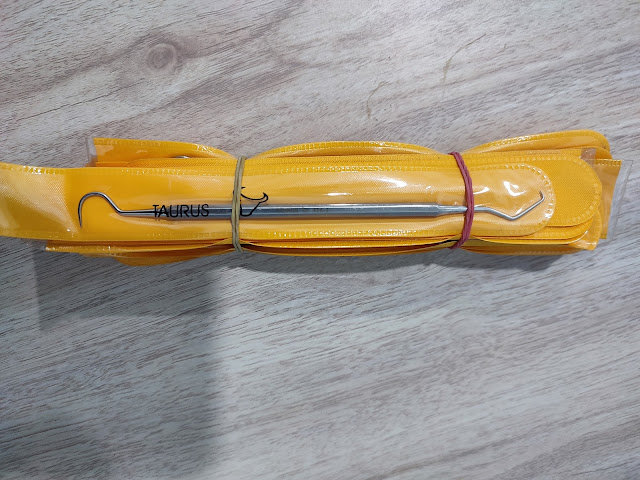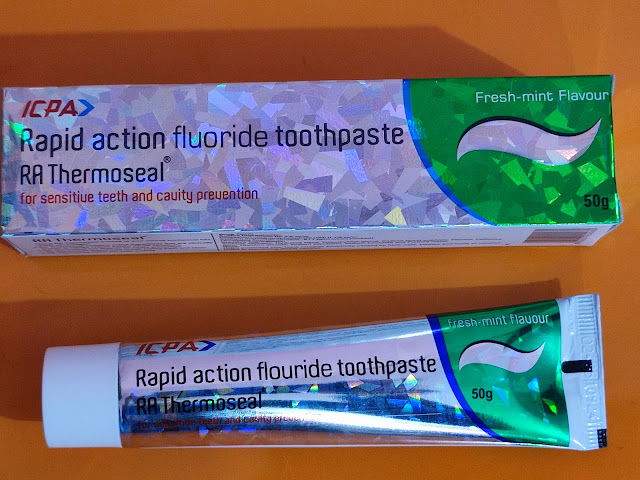 |
- Ensures proper contact points and contours.
- Provides a clear view of the working area due to its transparency.
- Easy to use and cost-effective.
 |
 |
 |
Key Features:
Uses:
Let me know if you want detailed images or more specific information!
 |
Explorer Dental Instrument is a sharp, pointed used by dentists to examine teeth for decay, cracks, and irregularities. They help in detecting caries (cavities), assessing the smoothness of restorations, and identifying plaque or calculus deposits. These instruments typically have thin, curved tips to reach tight areas in the mouth.
Common types of dental explorers include:
1. Shepherd’s Hook (No. 23): Commonly used to check for cavities.
2. Orban Explorer: Ideal for subgingival areas and anterior teeth.
3. Pigtail Explorer: Useful for detecting calculus in posterior teeth.
4. Straight Explorer: Used for general purposes and flat surfaces.
Would you like information on how to use it, care instructions, or specific brands/models?
A contra-angle handpiece is a dental instrument widely used in various dental procedures due to its ergonomic design and ability to access hard-to-reach areas in the oral cavity. It is attached to a dental motor and operates with a rotational motion, either in high or low speeds.
Common Uses of a Contra-Angle Handpiece:
1. Restorative Procedures: Used for cavity preparation by removing decayed or damaged tooth structure. Aids in finishing and polishing dental restorations like fillings and crowns.
2. Prosthodontics: Polishing and shaping crowns, bridges, dentures, and other prosthetics. Used for trimming and refining prosthetic components.
3. Endodontics (Root Canal Treatment): Drives endodontic files for cleaning and shaping the root canal system.
4. Orthodontics: Removes adhesive or cement after debonding brackets. Smooths the surfaces of teeth post-treatment.
5. Hygiene Procedures: Used with prophylaxis cups or brushes for scaling and polishing teeth during cleanings. Removes stains and plaque buildup.
6. Oral Surgery: Aids in precise cutting, trimming, or contouring of bone or soft tissue. Assists in removing or reshaping tooth structure.
7. Implantology: Plays a role in implant placement by preparing bone or securing implant components.
Types of Contra-Angle Handpieces:
Advantages:
There are so many specific types or brands of contra-angle handpieces. Some of them are as follows:
The EVE Universal RA 101 Set is a comprehensive polishing kit designed for dental professionals to smooth and finish a variety of dental materials, including amalgam, feldspar ceramics, gold, and composites.
Key Features:
Set Contents:
The Set includes eight polishers with coarse grit, each designed for specific applications:
W11: Small point (3 × 7.5 mm)
W1: Point (5.5 × 15 mm)
W2: Point (4.5 × 12 mm)
W2B: Flame (5 × 10 mm)
W5: Lens (10 × 2 mm)
W7: Wheel (10 × 3 mm)
W8: Chalice (10 × 6 mm)
W9: Flame (5 × 12 mm)
These polishers are designed for use with a contra-angle handpiece, operating optimally between 7,000 to 10,000 RPM, with a maximum of 20,000 RPM.
The variety of shapes and sizes in the set ensures comfortable use and provides easy access to hard-to-reach areas in the oral cavity, allowing dental professionals to achieve a natural-looking finish on restorations efficiently.
In summary, the EVE Universal RA 101 Set offers a versatile and efficient solution for polishing a wide range of dental materials, making it a valuable addition to any dental practice.
In dentistry, an articulator is a mechanical device that simulates the movement of a patient’s jaw. It is used by dentists and dental technicians to create, adjust, and analyze dental prostheses (e.g., crowns, bridges, dentures).
Key Features of a Dental Articulator:
1. Simulates Jaw Movements: Mimics opening, closing, and lateral (side-to-side) movements of the jaw.
2. Mounting Casts: Dental casts (models of the patient’s teeth) are mounted on the articulator to plan and create prosthetics.
3. Occlusion Analysis: Helps in evaluating how the upper and lower teeth come together (bite/occlusion).
4. Types:
Uses in Dentistry: Designing and adjusting dentures. Creating orthodontic appliances. Planning restorative treatments, such as crowns and bridges. Performing bite adjustments and diagnosing occlusal (bite) issues.
Would you like to know more about how an articulator is used or specific brands/models available?
A bone rongeur forcep is a specialized surgical instrument designed for cutting, trimming, or removing small pieces of bone or dense tissue. It is commonly used in procedures that require precise shaping or removal of bone structures.
Common Uses of a Bone Rongeur in Surgery:
1. Orthopedic Surgery: To remove bone fragments, shape bones, or create access points.
2. Spinal Surgery: To remove small portions of vertebrae or access nerve roots.
3. Cranial Surgery: To trim or remove bone during skull-related procedures.
4. Dental and Oral Surgery: To reshape or remove parts of alveolar bone during tooth extractions or implants.
5. Plastic and Reconstructive Surgery: To contour bone in facial or reconstructive operations.
6. Veterinary Surgery: For bone trimming in animals.
The rongeur's design, with sharp, scoop-like jaws, allows for controlled force and precision while working on hard tissues.
 |
 |
 |
| Rs. 50/- Per set |
The Stainless Steel Matrix Band No. 8 is commonly used in dentistry as part of the matrix band system. Matrix bands are thin, flexible metal strips designed to provide a temporary wall around a tooth during the restoration of a cavity, typically for amalgam or composite fillings. The No. 8 designation refers to the specific size and shape of the band, tailored for certain teeth or cavity types.
Features:
1. Material: Made from stainless steel for strength, flexibility, and corrosion resistance.
2. Shape: Designed to adapt to the contours of specific teeth.
3. Application: Typically used in posterior restorations (molars and premolars).
4. Thickness: Thin enough to allow close approximation of restorative material while still providing support.
 |
A tooth demonstration model is a 3D model, typically used by dental professionals or educators, to explain dental anatomy, procedures, or proper oral hygiene practices. These models can vary in design depending on their intended purpose. Here are some common types:
1. Standard Tooth Model
Shows the anatomy of a single tooth, including:
Often used to explain tooth decay, root canal procedures, or cavity treatment.
2. Full Dental Arch Model
Represents the entire upper or lower set of teeth.
Used to demonstrate bite alignment, orthodontic treatments, or scaling and polishing techniques.
3. Periodontal Disease Model
Highlights different stages of gum disease.
Shows healthy gums, gingivitis, and advanced periodontitis.
4. Dental Implant Model
Demonstrates how dental implants, crowns, or bridges are installed in the jaw.
Often used for patient education about restorative procedures.
5. Child’s Dental Model
Smaller in size, with primary teeth.
Designed to teach children about brushing and flossing techniques.
6. Orthodontic Model
Displays braces, aligners, or retainers on teeth.
Helps patients visualize orthodontic treatment results.
Would you like guidance on where to get one, how to make it, or how to use it in a demonstration? Please Contact us.
 |
 |
A water booster bottle for a dental chair is an essential component used to supply water to dental instruments and handpieces during dental procedures. It acts as a self-contained water reservoir that delivers a consistent and pressurized water supply, often as an alternative to a direct plumbing connection.
Key Features:
1. Pressure Regulation: Provides the required water pressure for dental equipment.
2. Portable and Compact: Easy to attach, refill, and maintain.
3. Self-Contained System: Ideal for clinics without a direct plumbing system.
4. Hygienic and Sterile: Allows the use of distilled or treated water, minimizing contamination risks.
Common Uses:
Maintenance Tips:
If you are looking to purchase one, you can explore dental stores in Nepal or international platforms like Amazon or dental equipment suppliers. Let me know if you'd like help finding a specific model!
 |
 |
 |
Biner LC is a light-curing cavity liner that is commonly used in dentistry. It is designed to protect the dental pulp and provide a barrier under restorative materials such as composites or amalgam. Here's a quick overview of its properties and applications:
Features:
1. Light-Curing: Requires curing with a dental curing light, ensuring quick setting and ease of use.
2. Fluoride Release: Many light-cured cavity liners release fluoride, which helps prevent secondary caries.
3. Biocompatible: Gentle on the dental pulp and suitable for use in deep cavities.
4. Adhesion: Forms a strong bond to dentin and provides an excellent surface for subsequent restorations.
5. Radiopacity: Visible in X-rays, making it easy to evaluate after placement.
Applications:
Instructions for Use:
1. Preparation: Ensure the cavity is clean and dry before applying the liner.
2. Application: Apply a thin layer of Biner LC to the cavity floor or walls using a brush or applicator.
3. Curing: Use a dental curing light to polymerize the liner according to the manufacturer's instructions (typically 20–40 seconds).
4. Restoration: Proceed with placing the restorative material over the cured liner.
If you are looking for a specific product, ensure to follow the manufacturer's guidelines for optimal results. Let me know if you need further details!
 |
 |
 |
An Adult Cheek Retractor with Wings is a dental tool commonly used during procedures to keep the cheeks, lips, and tongue away from the teeth, gums, and working area. This helps provide better visibility and access for the dentist or orthodontist.
Features:
Winged design: The wings help retract the cheeks further and maintain stability during the procedure.
Material: Typically made from medical-grade plastic, which is durable, reusable (autoclavable), or disposable, depending on the type.
Ergonomic design: Ensures patient comfort and easy insertion and removal.
Common Uses:
1. Teeth whitening procedures.
2. Orthodontic treatments like braces adjustments.
3. Dental photography.
4. General dental check ups and treatments.
Would you like recommendations on where to purchase one in Nepal or need more details about its uses?